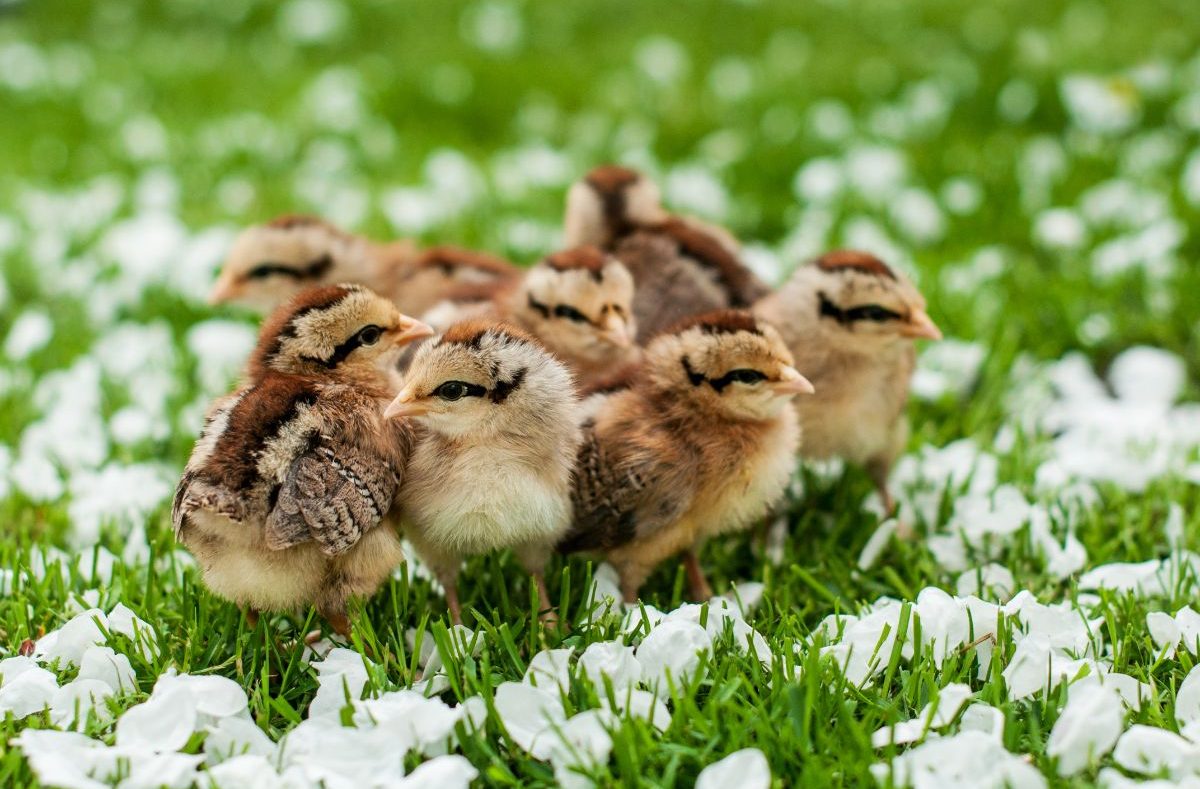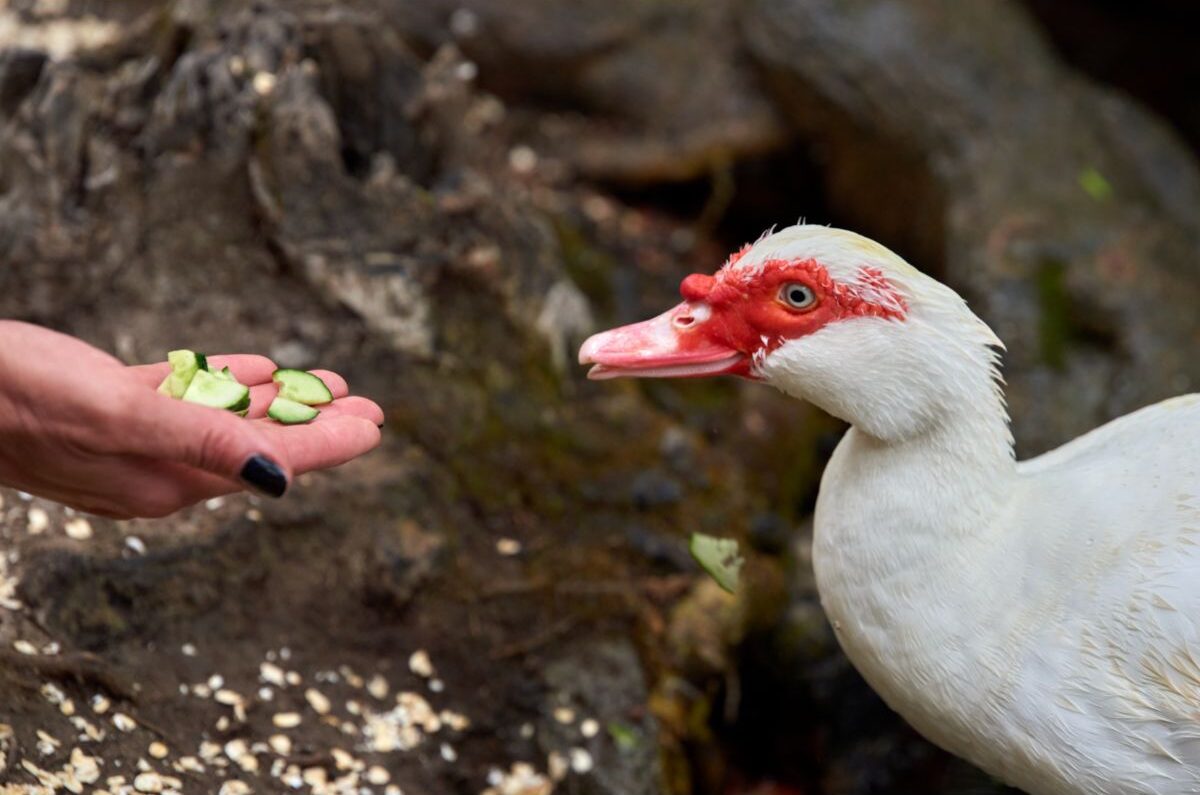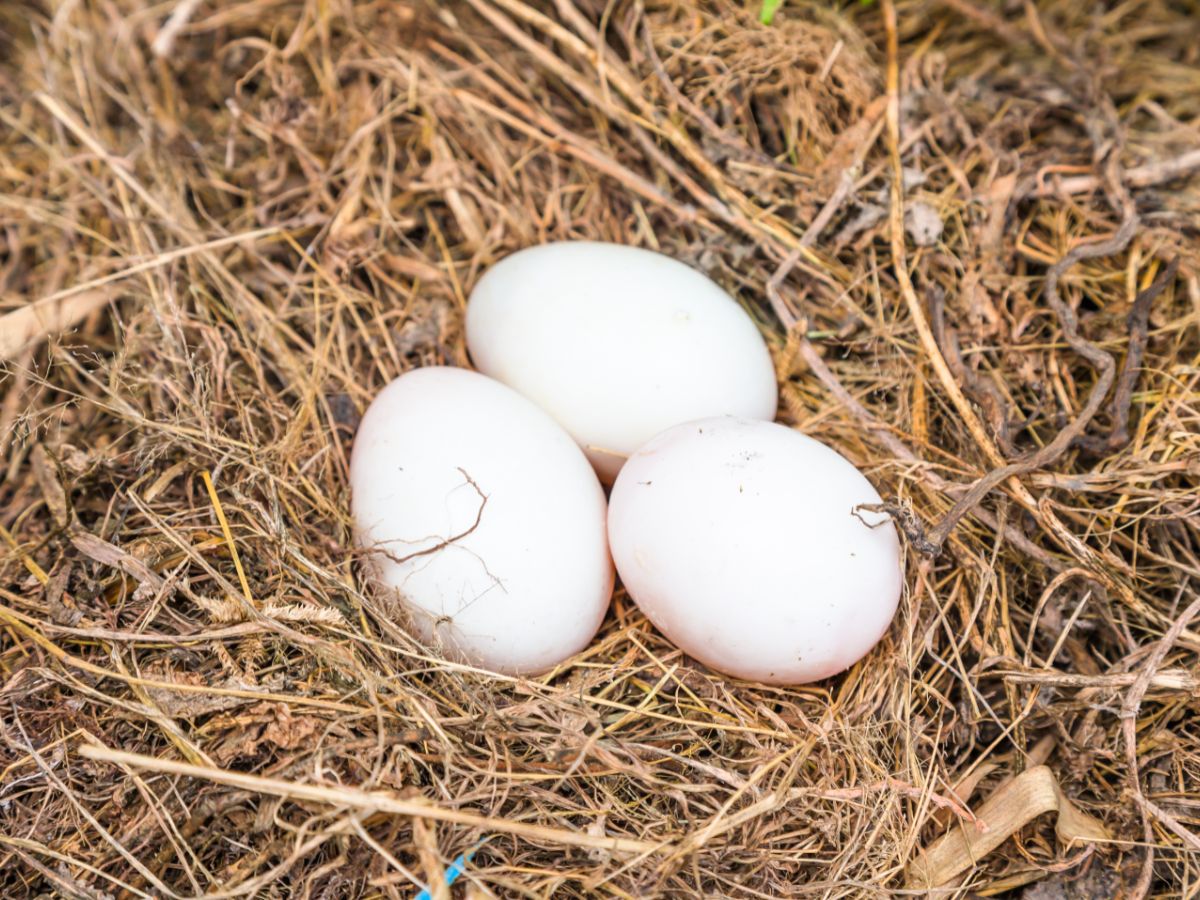If you’ve started raising your first group of chicks, and most of their feathers are in, you may consider moving them outside. Eventually, chicks begin to outgrow their brooder, which can get quite dirty quickly. But when is the right time to move your chicks outside?
Chicks can go outside when they have all their feathers. This is usually when the chicks are between 6-10 weeks old. However, chicks should not go outside if the temperature is below 50 degrees Fahrenheit. If they are left outside when it’s too cold, they may not be able to adapt to the cool weather.
When moving your chicks outside, you don’t want to risk putting them out too soon. It’s crucial to keep chicks at a stable temperature and only move them once they are big enough to go outside. Some people may move their chicks out sooner if they have a mother hen.
Contents
When Can Chicks Start Going Outside?
A temperature of 70 degrees Fahrenheit is perfect for letting your chicks go outside for the first time. Your chicks can go outside between 6-10 weeks old or when all their feathers have come in to keep them well insulated.
Chicks can also go outside when temperatures are a bit cooler. Still, they should not go outside if the temperature is below 50 degrees Fahrenheit and it’s a windy, cold day. Chicks should also not venture outdoors when there is rain and snow.
How To Bring Chicks Outside For The First Time
When taking your chicks outside for the first time, it’s best to keep it short so they get familiar with being outside first, then slowly increase the time they spend outdoors every day.
- Create a safe place for your chicks to explore outside. If you have free-range chickens and want to let your chicks be free-range, too, you can create a play for them to explore outside, away from the rest of the flock. You can put them in a fenced-off area or a playpen* for safety.
- Food and waterers. When bringing your chicks outside, ensure enough feeders and waterers. The chicks can get hungry and thirsty while out.
- Create some shade. If it’s a warm day and your chicks are outside, you’ll want to create shade to protect them from the heat. Shade cloth works well to provide some shade for your chicks.
- Reinforce the playpen or fenced-off area. To keep your chicks safe from the rest of the flock and predators, ensure the playpen and fenced-off area is safe for the chicks.
When Can Chicks Stay Outside?
Chicks can stay outside when they have all their feathers. This is generally around 6 weeks old. Moving your chicks out also depends on the current weather. The chicks should not be transferred outside if the temperature is too cold.
If you plan on moving your chicks outside, it’s best to do it gradually over several weeks so they can adapt to being outside. During this period, you can move them between indoors and outdoors and still keep them under the heat lamp when inside. Then, they should be ready to stay outside permanently after a couple of weeks.
When chicks are moved outside permanently, there is no need for them to use a heat lamp anymore. They will be fully feathered and adapted to living outdoors.
Preparing The Coop To Move Your Chicks Outside
Your coop may be set up for older chickens and may not be ready to accommodate chicks. Before moving chicks outside, it’s essential to set up your chicken coop, so they are comfortable. You’ll also need to introduce the chicks slowly into the flock, so your chicks do not become overwhelmed by the older chickens.
When moving your chickens outside and introducing them to the flock, there are a few things to consider. These include:
Start With A Chicken Run
A chicken run is a play area for your chicks. It is also known as a playpen or a fenced-off area for your chicks to explore outside. When starting to let your chicks go out, this is generally the first place you keep them. So, they will be completely safe in the chicken run and have time to adjust to the outdoors and the temperature outside.
Introduce Your Chicks To The Flock Gradually
Chicks have been kept in a brooder for their entire life, so they may be intimidated by a large coop and older chickens. Therefore, when introducing them to the flock and their coop, keep the visits short. An hour at a time is a good amount for the chickens to experience the coop and get to know the older chickens.
It is essential to ensure enough feeders and waterers for the chicks. You may have to show the chicks where the food and waterers are by carrying them over and placing them in front of the feeders.
Provide A Suitable Coop Environment For The Chicks
A coop is usually set up for chickens but may not be set up for chicks. Chicks may not be able to use the higher perches. Lower perches need to be set up for the chicks to use. Feeding and watering systems may be too high for the chicks to reach, and you may need other feeders and waterers for the chicks to use.
When Can Chicks Join The Flock Outside?
Chickens have a specific pecking order, and introducing chicks can make older chickens feel threatened about their place in the pecking order. Chickens also need time to get acquainted with the chicks. When chicks are introduced to a flock, they can be in danger of getting pecked by hens. Some behaviors like squabbling are expected, and you should not intervene unless there are chickens in danger.
A good time to introduce chicks to the flock is when they are 12 weeks old. Of course, you can introduce your chicks sooner, but this should be done for short periods, and your chicks should be supervised to ensure they are kept safe.
If the chicks have been hatched by a hen, then it’s a little bit different. In this way, they have some protection from the other chickens and may be able to join the flock sooner.
Conclusion
Chicks should be gradually moved outside between 6-10 weeks old. When moving chicks outside for the first time, visits outside should be short. Chicks should not be moved into the coop until they have been introduced to the flock. Some squabbling is typical when chicks join the flock but the most crucial aspect to consider when moving chicks outside is their safety.
Here’s an in-depth article on how to best get introduce new chickens to your flock.




